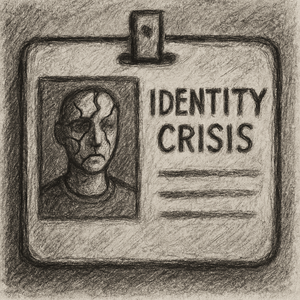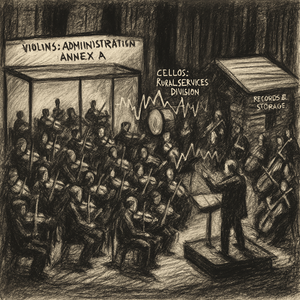Combining Technology, Data, and Humanity
I’ve spent nearly a decade at the intersection of data, design, and social change — as Chief Information Officer of Social Finance and founding CTO of Social Finance Digital Labs. My focus has always been to ensure that advanced technology works for people — especially the most vulnerable — rather than around them.
At Social Finance, I co-led the organisation’s shift into digital delivery, building a 30+ person multi-disciplinary team from scratch. We combined human-centred design, data science, and ethical technology to tackle complex societal challenges in children’s services, mental health, homelessness, and international development.
Guiding Principles
-
Purpose-Driven Data
The most powerful technology in the world is only as good as the data behind it. Without high-quality, well-understood data — and clarity on what that data actually represents — even the most advanced AI solutions will produce misleading or useless outcomes. Purpose and data literacy come first. -
Technology Doesn’t Have to Cost the Earth
Tech projects often suffer from scope creep, spiralling costs, and misaligned goals. While tools like user-centred design, agile, and lean methodologies are helpful, they are not silver bullets. Success requires an honest, shared understanding of risk, clear communication, and a continual focus on delivering value that meets real user needs. -
Ethics Aren’t Optional
Every social impact project must be grounded in outcomes and accountability. Understanding how a system affects everyone it touches — from frontline workers to the individuals it serves — is critical. Ethical complexity often only becomes apparent with time. That’s why we built frameworks to continually reassess and update our ethical approach, rather than treating it as a one-time checklist. -
Privacy Builds Trust
Privacy isn’t a barrier — it’s a foundation. In human services, it’s key to both delivering results and earning trust. Solutions that are designed privacy-first are not only more robust but often simpler, because they force clarity on how data flows and who’s involved. When systems are well understood, privacy is rarely the hard part.
A Few Highlights
-
Homes for Ukraine Platform
In under a week, we launched a secure, data-driven platform connecting over 100,000 displaced Ukrainians with UK hosts. We worked directly with DLUHC and the Home Office to deliver a national solution at breakneck speed, without compromising safety or privacy. -
Transforming Children’s Services
We redesigned data reporting for the Department for Education — a project that seeded a multi-year transformation of children’s social care, making it more outcome-focused and family-centred. -
Domestic Abuse & Perpetrator Interventions
Our data science team supported projects like The Drive Project, working with local authorities and police to identify and reduce harm caused by serial perpetrators of domestic abuse. -
Global Health Data Infrastructure
I led the design of secure, internationally compliant data collection and reporting protocols for Kangaroo Mother Care in Cameroon, ensuring alignment with both local healthcare workers and global ethical standards. -
Data for Systems Change
From launching Family Context (enabling privacy-first multi-agency data sharing) to mentoring apprentices in adult social care analytics, I championed a pragmatic, empowering approach to making data usable and useful at every level.
Building Teams, Not Just Tech
A big part of my job was cultural: breaking down perceived barriers between “tech” and “non-tech” staff, running workshops like “This is Python” and bringing together the whole company for internal hackathons and Advent of Code breakfasts. I believe that the best data science is not just smart, but shared — and that it lives or dies by how inclusive and accessible it is.
But it’s not a one-way street. Just as it’s essential to demystify technology for non-technical users, it’s equally vital to build empathy and understanding within technical teams. When engineers and data scientists understand the lived experiences of service users — and the sometimes messy, seemingly irrational realities of frontline delivery — the solutions they create become more relevant, more usable, and more impactful.
This two-way exchange builds pride and purpose. When technologists know why something is built a certain way, and who it serves, it transforms the work from technical output to meaningful contribution. That’s when teams really start to thrive — not just solving problems, but solving the right ones., running workshops like “This is Python” and bringing together the whole company for internal hackathons and Advent of Code breakfasts. I believe that the best data science is not just smart, but shared — and that it lives or dies by how inclusive and accessible it is.
From Strategy to Code
My role as CTO extended beyond setting technology strategy; I built the operating structure—from architecture and governance to hiring, mentoring, and ethics frameworks. My unwavering goal was to embed ethical, robust, and inclusive data practices into every layer of service delivery.
I believe effective leadership requires dual focus: maintaining a holistic, strategic system view while proactively identifying the small, critical flaws that escape attention. I dive into the ambiguous work others hesitate to touch. This isn’t micromanagement; it’s recognizing that real transformation happens by resolving those unclaimed gaps and turning uncertainty into clarity.
My approach is strong conviction, loose grip. I lead with clarity, but the moment a colleague offers a superior solution, I’m ready to pivot. Creating a culture where the right idea prevails over positional authority has been the key to our greatest successes.
Finally, I insist on shared ownership. There is no “my team” or “your team.” There is only the team. A leader is an equal partner who shares the burden and celebrates the outcome. This shared accountability makes meaningful progress possible.

